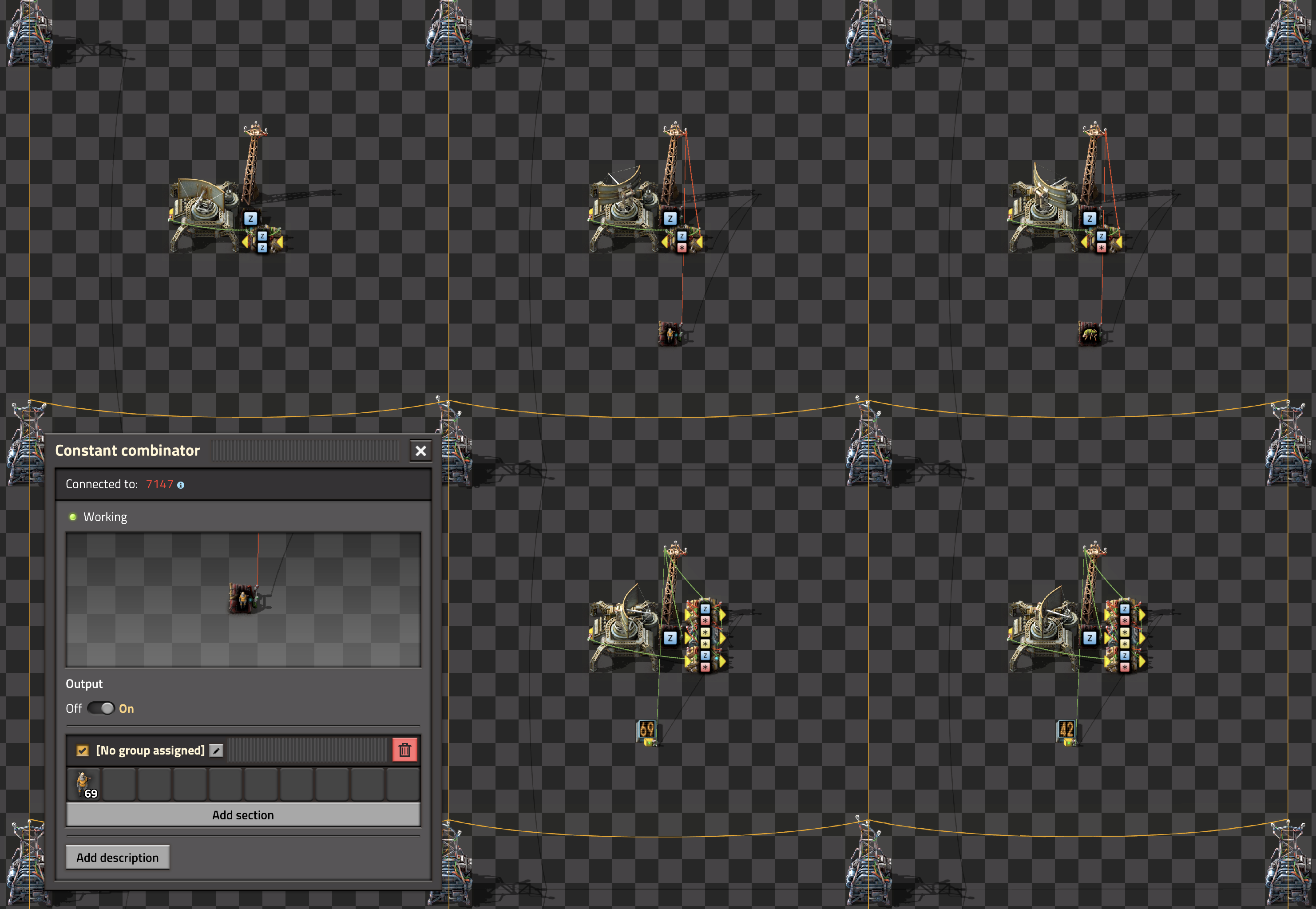kk
My intent here was to be able to send requests to a set of requester chests supplied stations with a list of items needed for construction, resupply, and maybe personal long distance logistics. Although I found I can’t really arbitrarily send a train to a station via circuit signal without having all receiver stations except one be disabled.
I have that blueprint book but, never actually looked at the core module. If I woulda been able to reverse engineer what the heck is going on there it mighta saved me some headache. Hindsight is a bear
The easy solution to clock sync was to only have one clock. There's some funkiness required to TX a signal during the TX's clock cycle due to combinator timing but, I used that to my advantage on the RX side as it now only requires a single frame delay combinator to keep the signal alive 100% of the time.
Woo! Same! I'm working on a bit packing solution ATM. Should be more UPS friendly and more resource friendly :D
I think I was leaning into the clock method as it doesn't have an upper/lower limit to circuit values or number of distinct circuits. Actually as I'm typing this I realized concurrent signals would have to share a 32 bit address space greatly limiting the min/max values. Two channels already limits me to 2^16-1 assuming I want a signed value.
That would be way easier. I'm a dumb.
np. love you bye ✌️
ok
I’m gonna have to save this so I can watch it after I fumble and fail setting up on Gleba without getting hints first 😅
Dandadan. The little dance that Aira does is fun

Proxmox with all of its warts appears to be the better hypervisor. If your host has the headroom like others suggested: proxmox with a VM hosting docker/podman.
I have to say running proxmox saved me from running to the basement or opening up IPMI a few times already when making suspect changes to a VM that otherwise would have taken down the network of my host.
ATM I’m running Proxmox with Nixos VMs running mixed docker/podman containers. It works out pretty well for my use case and with some opentofu fiddling I have most of my infrastructure defined in config files if that’s a rabbit hole you want to go down.
As for my experience with docker vs podman I have to say podman can pretty much do whatever docker does with the exception of docker swarm. You may have to do some digging to handle more advanced networking/gpu setups.
The only thing I have running docker atm is a gluetun container because container to container networking took more than 15m of research with podman so I fell back to the very well documented path using docker.